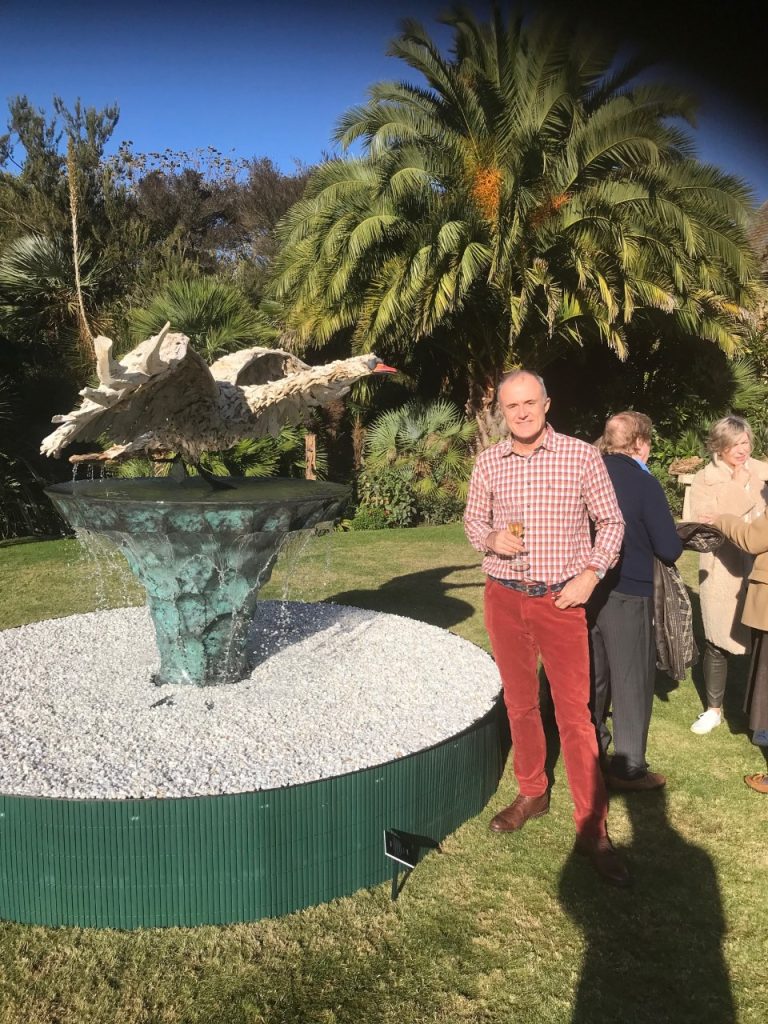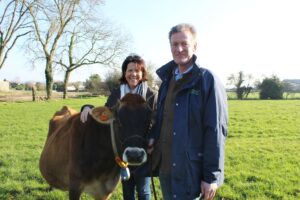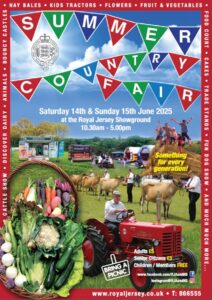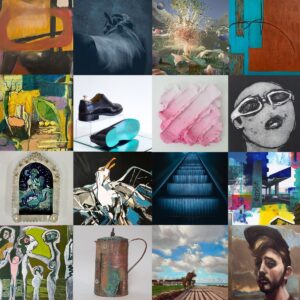
…. and quite a lot else! James Doran-Webb, who creates animal sculptures from driftwood and stainless steel, talked to Alasdair Crosby following his last exhibition at Trinity Manor in November 2022
The driftwood animal sculptures of James Doran-Webb underwent what might be called ‘user trials’ at his last exhibition in the gardens of Trinity Manor. The trials were caused by the weather and answered the question: were these sculptures impervious to rain? They passed the rigorous trials with flying colours.
James commented afterwards: ‘I have access to what is arguably the best wood in the world for what I make: molave. The wood on which I actually get my hands is in all cases more than 30- or 40-years dead, normally 50 to 60 years dead. It deteriorates very slowly and is very rich in tannins. The wood is very well known in the Philippines for being impervious to the weather and to powderpost beetles, woodborers, and termites. That’s only some of the qualities of this magnificent wood.’
To be fair, the heavy rain was interspersed with some bright and sunny days, especially the first day of the exhibition, in which the beauty of the sculptures was well complemented by the attractive gardens. The successful event was hosted by the owners of Trinity Manor, Pam and Paul Bell and 30 per cent of the sale takings (£8,000) went to benefit the Jersey Wildlife Conservation Trust.
‘I am looking forward to collaborating with the Trust in the future,’ he said ‘We also talked about making some sculptures for their upcoming auction, because actually there is a connection between them and Cebu in the Philippines, where my home is. The Trust has a successful breeding programme for the Visayan warty pig, an endangered species that can be found in Cebu. I really feel excited about making a sculpture: possibly of a family of Visayan warty pigs.’
The pieces on show were predominantly new creations. The centrepiece was a water feature, a swan rising from the water, titled ‘Airbourne’. It made use of stainless steel, which had been carved and welded and buffed and shaped and worked.

James said: ‘The palmate of the feet of the swan attached the swan to the water feature; the back leg actually hovers over the water – you don’t see the pipework or the retaining posts that hold the weight of the swan, because that’s submerged. The head of the swan is also made from recycled stainless steel.’
Another dynamic piece shown at the Trinity Manor exhibition is along the same lines: ‘The sunflower hare’, where he has six sunflowers branching up from a base, all made from recycled stainless steel, over which the driftwood hare appears to be floating – as if it is galloping through a field of sunflowers.
‘Using stainless steel as a base allows the sculpture to waft in the wind, which is really wonderful, because unlike bronzes, which are very strong, but don’t allow any movement.

‘Then there is the piece: dragonflies on the bulrushes. The bulrushes are made from stainless steel and are about 5ft to 6ft high. The dragonfly is driftwood, and if you get a bit of a breeze, the dragonfly will gently move back and forth, which adds a lot to the drama!

James has a family connection to the Island; he has cousins living here and his late uncle, Ian Walton, was the chairman of Falle Fine Arts, who arranged with John Falle to host his first exhibition.
‘That was some 13 years ago. It was an amazing success. For me, it was very memorable, because it was literally my first exhibition in Europe and effectively launched my European career. So Jersey does have a very special place in my heart and lots of my early work is in Jersey properties. For me, Jersey is definitely a second home. ‘
James had an unconventional childhood: his parents were antique and art dealers, and from the age of 8 he travelled the globe, following his parents as they bought their pieces. Eventually he ended up, aged 16, in Notting Hill Gate, London, at a crammer to study for his A Levels.
‘My father wasn’t really into a formal education, but the concession he made was that while I was cramming, I had had to sell antiques that he would send me and their sale would have to cover my school fees. I opened up a stall in Portobello Market on Saturdays. The problem with that was that I ended up at the end of the week with lots of money in my pocket and I started to question the logic of continuing on with my studies.’
Aged 20, he moved to the Philippines after a year working in New York. That’s when he started to make animals in all their various forms, including ‘mobiles’ for children – small animals that balance and turn in the wind, and also papier mâché animals. Twenty years ago he made his first driftwood horse.
In the Philippines he is well-placed to collect his raw materials: the molave wood come either from old houses that have fallen down, or from little bits of wonderfully shaped wood that he finds here and there. Then he has convenient access to nearby boat wrecking yards from where there is a steady source of marine-grade stainless steel – all of it recycled, of course.
There is also the advantage of the warm climate: ‘a lot of the work is outdoors. I have some 400-500 bits of wood that I have collected of this long-dead, magnificent wood, which is all stored outside. A large part of the working day is spent outside on the woodpile, looking for that piece needed to fill in the eyebrows of a horse or the rear end of a stag.’
He still lives in the Philippines with this wife and daughter, only visiting Europe for such events as the Chelsea Flower Show and the Jersey exhibition.: ‘I’ve spent most of my life out there. It’s the pace I know’ creatively, I couldn’t wish to be in a better place. I’m so fortunate. I don’t think I could make my sculptures anywhere else.’
His sculptures are sent by shipping container to the UK once or twice a year in time for Chelsea or Jersey; that’s the easiest part; the hardest part is making the pieces and letting go – and I hate letting go of my sculptures.’
Last year, however, shipping was by no means the easiest part: ‘we were in the midst of a shipping crisis. Shipping schedules went absolutely haywire: you couldn’t find the container or depend upon the schedules. I had allowed a month in hand to get the sculptures to Jersey, but it wasn’t enough. Week by week and day by day we were advised of further delays. It got to the point that in the end I had to cancel the Jersey exhibition. It was very depressing.’
This year has been luckier, with three successful exhibitions, of which Jersey was the largest. Next year, at the Chelsea Flower Show, the centrepiece of the stand will be a 7-metre-high wyvern (dragon). Also, three galloping thoroughbreds – and what should be an arresting sight: a piece titled ‘The importance of belief’: a ladder that rises up 220cms, and has a British Lop pig on the top of the ladder, with a couple of wings, about to try flying.
What a line-up for the Chelsea Flower Show!





